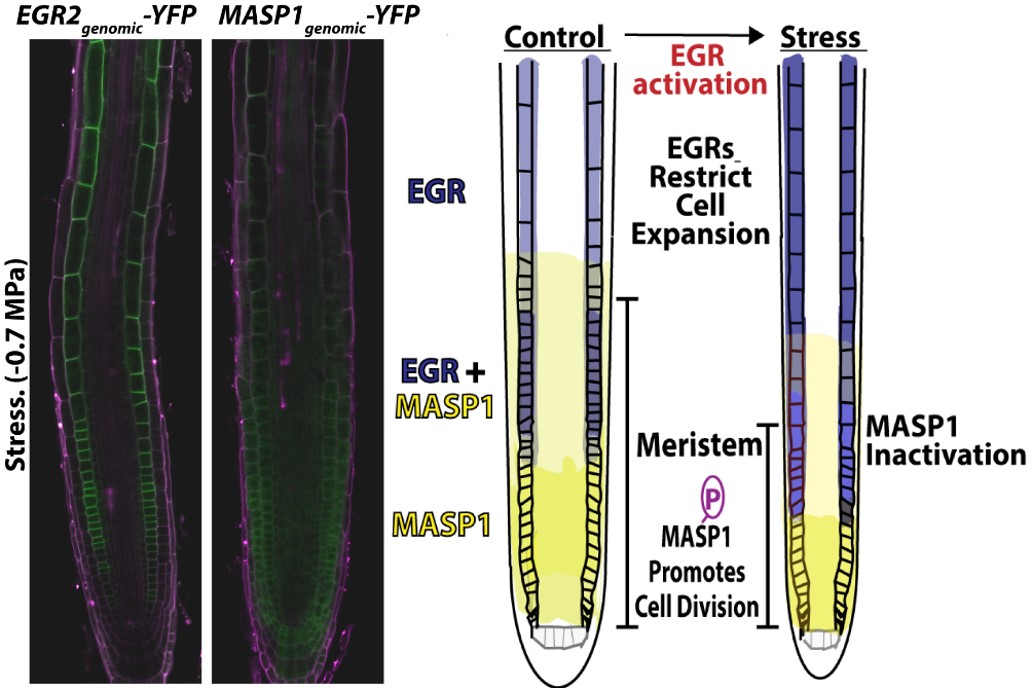
Living on this beautiful blue planet, we often appreciate a variety of exquisite plants. However, as climate change intensifies, our Earth is facing an unprecedented challenge. The issues of drought and decreased rainfall pose threats to our crops and plant ecosystems, highlighting the critical importance of plant drought tolerance.
So, how do plants respond to such extreme conditions of drought, and what are the regulatory mechanisms governing their growth? Through this knowledge, we may be able to find solutions to tackle future challenges posed by drought conditions and ensure continued plant growth and productivity. In this article, we introduce two important proteins found in plants: Clade E Growth-Regulating 2 (EGR2) and Microtubule-Associated Stress Protein 1 (MASP1).
Clade E Growth-Regulating 2 (EGR2) and Microtubule-Associated Stress Protein 1 (MASP1) are two important proteins that assist plants in coping with drought stress.
Researchers in the laboratory of Dr. Paul Verslues at the Institute of Plant and Microbial Biology, Academia Sinica discovered the connection of these proteins to plant drought resistance and have conducted experiments to understand how these proteins function. The ultimate goal of such research is not only to better understand how plants work, but also to know whether changing the activity of these proteins could be a way to improve the drought resistance of economically important plants.
When plants face drought or water scarcity, the expression of EGR2 is regulated and increases. One function of this increased level of EGR2 is to control how fast the plant grows. EGR2 inhibits plant growth. It may seem surprising that plants would choose to grow less than they could, but this can be beneficial to the plant by blocking the growth of roots that are in dry soil so that other roots on the same plant that are in wetter soil can grow more. Also, reducing the growth of leaves will reduce how much water is lost to the atmosphere by evaporation from the leaf (in plants this is called transpiration). However, EGR2 cannot control plant growth by itself. Rather, EGR2 works by controlling the activity of other proteins.
Thus, the next important question our scientists tackled (and are still working on) was: What proteins does EGR2 control?
MASP1 is another newly studied protein that works hand-in-hand with EGR2. MASP1 promotes growth, but only when it has been activated by phosphorylation. Phosphorylation is the process that living organisms (not just plants!) can use to turn on or turn off the activity of a protein without having to make a whole new protein. EGR2 is a phosphatase (removes phosphorylation) that turns off MASP1. Thus, controlling the on-off switch of MASP1 is one way that EGR2 can suppress plant growth. Plants that are engineered to make a modified version of MASP1 that is always on and cannot be turned off by EGR2 can better maintain growth when faced with a moderate reduction in water availability. This can be useful to construct plants to maintain productivity under some types of drought conditions.
Plants can increase their growth by either making more cells or by making their cells bigger.
The Verslues laboratory sought to further understand which of these processes (or both) is the basis for EGR-MASP1 effect on plant growth during drought stress. Plants lacking EGR2 activity (EGR2 mutants) have both more cell division (making more cells) and more cell expansion (making bigger cells) during drought stress. Genetic experiments to combine EGR2 mutants with MASP1 mutants found that when MASP1 is absent, the EGR2 mutant no longer made more cells during drought. But it did still make bigger cells. Further experiments showed that MASP1 which has been activated by phosphorylation makes to root meristem, the region at the root tip where cell division occurs. One way that EGR2 represses growth is by inactivating MASP1 and preventing it from making the root meristem bigger. Consistent with this, EGR2 and MASP1 exhibited opposing gradients of expression across the root meristem such that the place where they meet each other determines root meristem size.
These results revealed a new mechanism that plants use to regulate cell production; however, they also raised a new question.
If EGR2 regulation of cell expansion does not need MASP1, what other proteins work with EGR2 to control cell expansion?
The Verslues laboratory is currently identifying other proteins that EGR2 uses to control how big plant cells get and also studying other proteins that work with EGR-MASP1 to control cell division. The results of this research will reveal even more ways that we can adjust plant growth to improve productivity in different environments. This is one of the ways that plant science can offer solutions to the challenges posed by climate change.

Figure:
Left side shows the opposing gradients of EGR2 and MASP1 protein accumulation (green color) in the root meristem (magenta color is cell walls).
Right side is a schematic diagram of how opposing EGR-MASP1 gradients, and MASP1 phosphorylation, control root meristem size during drought stress.
References:
Toshisangba Longkumer, Chih-Yun Chen, Marco Biancucci, Govinal Badiger Bhaskara, Paul E Verslues*
Plant Cell, 34(2):742-758, https://doi.org/10.1093/plcell/koab290
Govinal Badiger Bhaskara, Tuan-Nan Wen, Thao Thi Nguyen, Paul E. Verslues*
Plant Cell, 29(1): 169–191, https://doi.org/10.1105/tpc.16.00847
